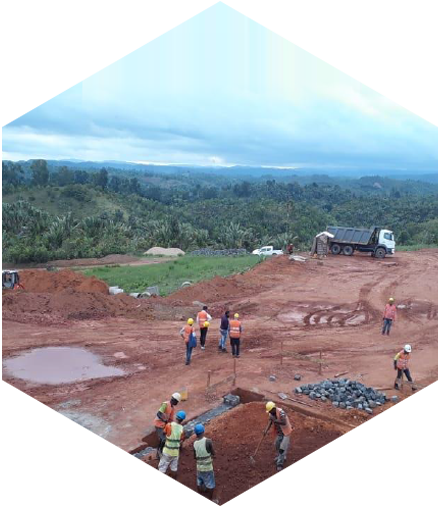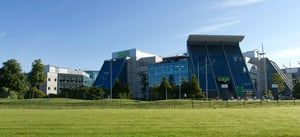Tirupati Graphite plc (LON:TGR) Executive Chairman & Managing Director Shishir Poddar caught up with DirectorsTalk to discuss their successful and oversubscribed fundraise, the significance of the Battery Minerals acquisition and the next steps for the company.
Q1: First off, congratulations on a successful and oversubscribed fundraise. Could you just talk us through the logic behind the placing?
A1: I must first thank all the investors who subscribed to our placing and also Optiva, who were the sole bookrunner for this placing.
We all know that Tirupati has graphite projects in Madagascar, we’ve reached quite a threshold of operations there, and that’s growing to its 84,000 tonnes capacity but the way the graphite world is going, the way the energy transition requirements of graphite are growing, we have said that it is our aim to be more or less 8% of global graphite needs in capacity. That means we need to be at more or less 400,000 tonnes of production by 2030.
Now, our Madagascan assets had certain limitations, both on the resources and so many things, and it was our intention to diversify our geographical location also so that was the logic because of which we had entered into an acquisition agreement for two assets in Mozambique with Battery Minerals Limited, that was last year.
Over the months that have passed, all the requirements to complete this acquisition were kind of done and it was now time for us to give it the final blow so that we can complete the acquisition. The acquisition required more or less, £3.5 million pounds of cash outflow to be completed in different arenas, and this capital raise enables us the funding of this entire process to completion. It also gives us some additional working capital which will be very handy for the company to take the next steps also as it completes the acquisition.
So, overall, this capital raise, I think, brings us to a situation that we are fully funded to take the next steps forward for the growth of the company.
Q2: So, just judging by what you’ve said, all the hurdles are now complete for the acquisition in Mozambique, it’s all settled. Could you explain the significance of that then for the company?
A2: Let me first tell you what is the stage of these projects that we are acquiring from Battery Minerals.
So, Battery Minerals, through its subsidiary Suni Resources, owns two Mozambican graphite projects, which sit not too far away from each other, and they’re located in the same area as the world’s largest graphite producing project in the world is located, that’s the Balama region
Now, the stage of these two projects is that Montepeuz has a fully licensed construction started project, which can go to 100,000 tonnes of flake production as per its current licenses approvals, and it has the capacity to go further, in my personal opinion. The second project, which is better known as Balama Central project, that has more or less a 50,000 tonnes of fully licensed construction to start permitting on all grounds.
This means what? We acquire two projects in a jurisdiction which is known to host good high quality graphite, which is actually the seat for the world’s largest graphite operation today and it is ready to go on. It’s not an exploration project, it’s a beyond BFS stage project that we have acquired so now we have the ability to just take it forward.
Now, the other important thing that is vital for us and for our investors to know that while we have all these studies and BFS’s and all the technical data, in fact even some offtake agreements that we inherit up upon completion of this acquisition, we have the ability to further optimise these projects economics, using the technologies, know-how everything that we have. That would mean that we can reduce the investment requirements most substantially in these, and also could optimise the operating costs. So, as we are going to be engaged with completion right away, we will go ahead and do the optimisation studies, and this will help us to go to the biggest names in the EV sector, in the battery sector, and even in other graphite consuming sectors.
Now, this is the project we have, it has 152 million tonnes of JORC 2012 resources and reserves, and we have the licenses to build it to 150,000 tonnes in three modules, which we can expedite if required, get into the big guys, which was difficult for us to manage through our Madagascan projects. 152 million tonnes of resources and reserves in the ground with contained graphite content of more or less 13 million tonnes plus, that’s a huge number. I’m not sure where this size will sit globally on the size of projects of graphite that are there today in the world, but definitely it’ll be one of the top league.
So, this actually transforms the company from being, you can say a smaller Madagascan producer going to 84,000 tonnes which is significant, no doubt, but this asset gives us the ability to go to hundreds of thousands of tonnes of capacity. The demand is growing, we see reports every day so it’s truly an acquisition that will help us take the level that we want to take it.
So in all of this, it’s quite a significant step in the company’s journey.
Q3: What are Tirupati Graphite’s near term milestones just moving forward?
A3: So basically, our Madagascan projects are reaching the 30,000 tonne milestone, the 30,000 tonne capacity milestone is quite a huge achievement, and that to more or less in two years with an established lowest capital cost globally. So, that is what brings us to the company where it turns to a stage that it becomes more or less bottom line positive, that’s a very big milestone for us.
The acquisition, which is now just a process, we have comfort letter from the Government of Mozambique in hand, there are two financial requirements to be met, which we have raised the funds for, and that acquisition is a process and we’ll complete that process. We have that acquisition coming to us as the second big milestone in the near term.
Apart from this, we are looking at working on different locations, geographically, to set up possibly downstream graphite processing for the high-end applications.
With these important things now set aside and completed, it gives us the time and resources to start working on those directions so we are in for a lot of things. There are a lot of smaller milestones like hydropower that we are generating and the next modules to come up in up in Madagascar, a lot of offtake agreements could be seen coming up in the near future but in developing capacities and building the base of the company, these are the significant things that you can see.








































